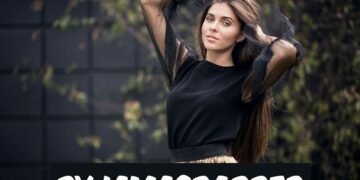Introduction
When we speak of truly well-made clothing, upholstery, or gear, we often forget the one element that holds everything together—the seam. In German, the word Nahttypen encapsulates this invisible hero. It literally means “types of seams” (Naht = seam, Typen = types), referring to the various ways in which fabrics are joined. Nahttypen are the structural DNA of sewing—an engineering decision as much as a design one. Whether it’s the hem on your silk blouse, the rugged join of a backpack, or the clean finish inside a luxury sofa, Nahttypen determine the final outcome’s strength, beauty, and durability. These seams are not merely functional; they influence fit, flow, shape, and longevity. This article will explore all major Nahttypen, their structures, use cases, advantages, and how to master them for fashion, home, or industrial applications.
Understanding the Basic Concept and Origin of Nahttypen
The term Nahttypen originates from the German sewing lexicon and reflects the precision associated with European tailoring. It’s not just a technical term; it’s a framework. Nahttypen represent different ways of stitching fabric, tailored to specific material behaviors, functional requirements, and aesthetic goals. From traditional straight-stitched seams to innovative bonding methods, every seam tells a story about its purpose. Seam choice dictates how a garment stretches, how it wears over time, and even how comfortable it feels against the skin. From bridal gowns to tents, the choice of Nahttyp can be the deciding factor between brilliance and breakdown.
What Makes Each Nahttyp Unique?
Each Nahttyp serves a specific structural and stylistic goal. Some focus on strength, such as the flat-felled seam, while others prioritize elegance, like the French seam. Construction technique varies: some are folded, some are enclosed, others stitched and overlocked. Finish also plays a role—some seams are raw, others turned, serged, or even bound. Material dictates the choice: cotton demands different seams than leather or Lycra. A key function of every Nahttyp is stress management. Activewear needs seams that stretch; upholstery seams must resist constant weight. In essence, each Nahttyp is selected based on fabric type, stress points, stretch requirements, and aesthetics.
The Core Nahttypen You Must Know
There are several essential Nahttypen every designer or sewing enthusiast must master:
-
Plain Seam (Geradstichnaht): Basic straight stitch. Used in most garments.
-
French Seam (Französische Naht): Enclosed edges. Ideal for delicate fabrics.
-
Flat-Felled Seam (Kappnaht): Double-stitched for maximum strength. Common in jeans and tents.
-
Overlock Seam (Overlocknaht): Trimmed and serged. Used in knits and stretchy fabrics.
-
Double Topstitched: Adds durability and decoration. Seen in denim and outerwear.
-
Lapped Seam: One layer overlaps the other. Perfect for upholstery and leather.
Each type varies in complexity but all provide specific benefits depending on the need—be it durability, beauty, or flexibility.
Plain Seam (Geradstichnaht)
This is the bread-and-butter of all Nahttypen. The plain seam uses a straight stitch to join two fabric pieces, pressed open afterward for neatness. Though simple, it forms the foundation for countless garments—blouses, shirts, skirts, and more. When finished with an overlocker or zigzag, it becomes more durable. It’s fast, clean, and versatile. While it may not offer extreme strength, it balances ease of sewing with sufficient resilience, making it the go-to choice for both beginners and professionals alike. It also adapts well to lightweight and medium fabrics.
French Seam
Elegant, clean, and ideal for fine fabrics like silk and chiffon—the French seam encases raw edges inside the fold, creating a polished finish. Though it requires two stitching passes, it’s worth the effort. It’s used where beauty and delicacy matter: lingerie, bridalwear, and scarves. It eliminates fraying and offers a high-end touch. Despite its elegance, it’s surprisingly robust when done right. The softness of the internal finish makes it comfortable for sensitive skin and provides visual sophistication, making it one of the most respected Nahttypen in luxury fashion.
Flat-Felled Seam
If strength is your goal, this is your seam. The flat-felled seam folds one fabric edge under the other, then double-stitches the layers. This creates a clean, compressed seam with no raw edges. It’s nearly indestructible and perfect for jeans, workwear, tents, and backpacks. The double lines of stitching add a visual design element too. It resists heavy wear, repeated washing, and stress. While more complex to construct, the durability payoff makes it invaluable for industrial, outdoor, and heavy-use textiles. Many consider this seam a technical marvel of fabric construction.
Overlock Seam
The modern world runs on knits, and overlock seams make them possible. Using 3–5 threads, this seam is sewn, trimmed, and finished in one step via a serger. It’s fast, clean, and stretchy. From leggings and yoga pants to swimwear and underwear, overlock seams dominate. Their ability to handle stretch without breaking is unmatched. They provide a sleek look with minimal bulk and often replace traditional seams in commercial garments. They’re essential in performance wear and fashion-forward pieces requiring flexibility.
Decorative and Specialty Seams
Nahttypen aren’t just structural; they’re expressive. Decorative seams include topstitched, piped, lapped, bound, and welted seams. These elevate garments from functional to fashionable. Think couture gowns with hand-bound seams, or leather bags with lapped and topstitched joins. These types require more planning but pay off in aesthetics and uniqueness. They allow brands to stand out while still ensuring structural integrity. Used in both high-end fashion and artisanal DIY projects, these seams blend design, technique, and storytelling.
How Nahttypen Affect Design, Fit, and Feel
Seams are not merely joints—they are architectural lines that shape the garment. Seam placement affects fit—princess seams sculpt the body, while raglan seams allow mobility. Visible seams, especially contrast-stitched ones, add character to outerwear and denim. Invisible seams create fluid silhouettes in formal wear. Seam type can dictate how a garment hangs, stretches, or resists wear. Choosing the right Nahttyp is not just functional—it’s visual, tactile, and emotional. The choice can soften a jacket or give sharp edges to a coat. That’s the real power of seam design.
Seam Strength and Durability in Tough Conditions
In tough-wearing garments or gear, seam choice directly impacts durability and safety. Flat-felled and lapped seams hold up under intense strain. Reinforced seams in workwear reduce tearing and wear. Outdoor gear demands waterproof or heat-sealed seams to withstand the elements. A garment may use multiple seam types in different areas—flexible overlocks at joints, strong felled seams at load points. Professional sewing involves planning for stress distribution. The correct seam protects the garment, the user, and even the brand’s reputation.
Comfort and Fabric Behavior
Comfort isn’t just about fabric—it’s also about seam behavior. Rough seams cause irritation. In delicate garments like lingerie, soft French seams or flatlock joins are preferred. In stretch garments, seams must flex naturally. Misaligned seams tug and distort fabric, ruining the fit. Correct seam choices reduce friction, enhance comfort, and improve longevity. A poor seam on good fabric makes it unwearable. Great seam design harmonizes material, motion, and wear.
How to Pick the Right Nahttyp for Every Fabric
Each fabric has its perfect Nahttyp. For light materials like voile, French or plain seams offer grace. Heavy fabrics such as denim demand flat-felled or lapped seams. Stretch fabrics love overlocks or zigzag stitching. Delicate designs benefit from bound or enclosed seams. Always test on a scrap before final stitching. Seam type should complement stretch, thickness, washing needs, and final look. Never assume one seam fits all—it doesn’t. Customizing seams to fabric creates professional-grade results.
Industrial and Technical Uses of Nahttypen
Nahttypen extend beyond fashion. In automotive upholstery, furniture, and medical gear, seam integrity matters. Lapped seams in car seats resist friction and weight. In tents and backpacks, taped or sealed seams maintain waterproofing. For couches and recliners, decorative topstitched seams blend beauty and function. In sports and medical textiles, seams must support movement while maintaining hygiene. Seam design in industry often involves regulatory standards—fire resistance, tensile strength, and even antimicrobial coatings. It’s science, not just stitching.
Future Innovations in Seam Technology
Seams are evolving. Seamless bonding uses heat and glue to merge fabrics without thread. Popular in athletic and minimalist wear, they’re smooth and futuristic. Ultrasonic welding joins synthetic materials using vibration—ideal for hygiene items, aerospace, and technical gear. Smart seams integrate sensors, QR threads, or conductive fibers—perfect for wearables and digital fashion. The world of Nahttypen is stepping into technology and sustainability without losing its roots in craftsmanship.
How to Master Nahttypen — Practical Tips
Perfect seams start with practice. Always press seams during construction. Use appropriate thread and tension. Reinforce corners and high-stress points. Finish every seam—raw edges fray. Invest in a seam gauge, pressing ham, and quality scissors. Test tension and stitch length on scraps. Learn different techniques via courses or sewing communities. Over time, your seam work becomes your signature—clean, durable, and elegant.
Common Mistakes and How to Avoid Them
Avoid picking the wrong seam for fabric type—don’t use flat-felled on chiffon. Don’t ignore seam allowances—too narrow causes stress, too wide adds bulk. Always finish raw edges to prevent fraying. Prewash fabric to prevent shrinkage later. Many errors in Nahttypen come from haste or overconfidence. Slowing down improves precision.
Nahttypen Around the World
Sewing traditions vary globally. Japanese makers focus on clean internal seams, favoring hand-finishing. European couture emphasizes precision and durability. Indian sari makers use overlap seams for adjustability. Cross-cultural learning enriches seam knowledge. Schools often teach seam strength grading, equipping students with global seam fluency.
Fashion Trends in Nahttypen
Visible seams are rising in popularity—think topstitched coats and piped loungewear. In streetwear, utility seams blend design and durability. As fashion cycles evolve, Nahttypen become design tools. Minimalist designers use external seams as bold accents. Decorative seamwork becomes brand identity. Seam aesthetics now matter as much as function.
Where to Learn More About Nahttypen
Resources include books like “Reader’s Digest Guide to Sewing” and “Vogue Sewing.” Platforms like Skillshare, Craftsy, and Udemy offer seam tutorials. Practice projects include cushion covers, skirts, and tote bags. Tools you need: seam roller, gauge, pressing ham, and a serger. Join sewing forums for feedback and growth.
Conclusion
Every stitch counts, but it’s the seam that shapes the soul of a project. Nahttypen influence how clothes move, feel, last, and look. Mastering seam types turns ordinary projects into masterpieces. It’s not just about sewing—it’s about understanding structure, design, and function as one. Whether you’re a beginner or a seasoned designer, Nahttypen are the ultimate tool in your creative arsenal.
FAQs About Nahttypen
1. What is the most versatile Nahttyp?
The plain seam is the most universal—it works on most fabrics and styles.
2. Which Nahttyp is best for jeans or workwear?
Flat-felled seams provide the strength and durability required for heavy-use garments.
3. How do I choose the right seam for stretch fabrics?
Overlock seams or zigzag stitches allow the seam to stretch with the fabric.
4. Can decorative seams also be strong?
Yes, many decorative seams like double topstitched ones are both stylish and durable.
5. Are seamless seams stronger than stitched ones?
Not always—seamless designs are cleaner but may lack traditional stitch strength unless bonded well.
More Article Links :
Serumcu: Smart Science for Glowing, Healthy skin


















Discussion about this post